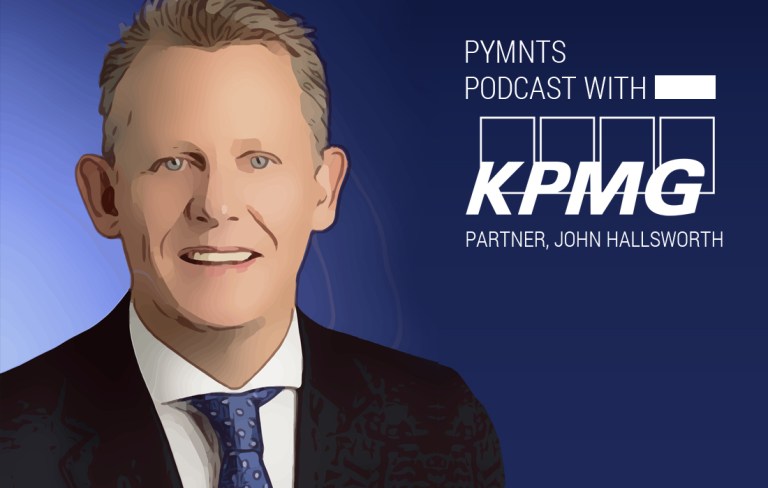
Nearly a year on, Open Banking has a bit of mileage behind it and roadmap stretching ahead.
Far-flung governments are requiring banks to make customer data available to third parties in an effort to provide services and provide transactions for those end users.
A grand experiment to be sure, one that is crystallizing in the United Kingdom, where standards are live as of this writing and have been since January. Other nations that are looking at adopting Open Banking — along with rollouts of APIs — include Hong Kong, with APIs slated for debut in 2019 and Australia, which is eyeing Treasury Open Banking by next summer.
In an interview with Karen Webster of PYMNTS, John Hallsworth, partner at KPMG, said that since the January debut of Open Banking in the U.K., via mandate from the Financial Conduct Authority, “it has been a fascinating journey to date.”
He described the U.K. as a “lightning rod … where there has been strategic debate about the potential change on the marketplace — not only around the evolution of banking models and new entrants who are not banks — but also around the consumer’s needs and how best to serve that consumer in the future.”
It’s early days yet in what promises to be a sea change in banking services, he said. The most readily apparent and available — not to mention widespread — use cases revolve around processes marked by voluminous (and, for the consumer, tedious) data collection, such as when applying for a mortgage.
SMEs: Wary of Open Banking?
But the road to progress and innovation can be a bumpy one, at least when it comes to certain end users adapting to, and adopting, Open Banking. That’s especially true when it comes to SMEs.
Hallsworth said that in KPMG’s own research, most SMEs are at least aware of Open Banking. Roughly nine in 10 respondents surveyed by the firm understand “at least a little” about what Open Banking means for them. But drill down a bit deeper and some stark segmentation takes shape in terms of willingness to share data and just what type of services firms desire if and when they do share that data.
“We identified three clusters/ types of SMEs in terms of their potential adoption of Open Banking, which shows that OB isn’t for everyone, at least not yet,” he told PYMNTS.
The smallest of firms — they might be thought of as micro-firms, roughly a third of the sample — do not seem to trust, well, anybody with their data.
Then there are “moderate” mid-sized companies that by and large have had their sales clustered in the U.K. Hallsworth noted that retail firms make up 24 percent of this cluster — and, said Hallsworth, as banks seek to broaden service offerings “they should seek to own this cluster as their ‘heartland.’”
That last third — consider them “early adopters” — include those relatively larger firms, such as tech/telecom/media companies, with higher sales and a higher proportion of non-U.K. sales. “There is everything to play for in this segment” when it comes to Open Banking, said Hallsworth.
All told, there’s opportunity for High Street banks, and for eCommerce and financial companies to capitalize on the trust that has been placed in them by SMEs to keep data safe. “These companies are interested in the value that their data has got,” said Hallsworth. Along the way, the most valuable scenarios of data-as-value-realization come where money is saved managing business accounts.
KPMG found that up to 56 percent of SMEs would be prepared to pay for banking services such as making payments — easily and quickly — to and from their supply chain. In addition, there is value in having a dashboard for business accounts that span savings and debt and can help offer insight into optimal financial positions.
Webster noted PSD2 wraps around a regulatory technical standard that needs to be in place across Europe by September of next year. The directive, of course, seeks to bolster consumer protection through new documentation and security monitoring.
Hallsworth stated that, at least from his observation, there is logic in putting standardized legislation in place that can govern cross-border activity. The EU, after all, “is not just one market, it is a set of markets,” he said.
“A lot of countries are looking at the U.K.,” he said, “because we have effectively moved in advance of this agenda … so the U.K. is like an experiment,” he said. Banks have a lot to do in order to become PSD2 compliant and through the next year will “have to wake up to that agenda.” After the compliance boxes are checked, that is when the innovation in terms of new financial and products will kick in.
“It is fascinating how this could evolve,” he said, “as we start to see the use of banking data to drive a much better world for the end consumers. We are going to see the banking value chain change and potentially even break up to a degree.”
As compliance challenges are blocked and tackled, banks are going to have to address the fundamental questions of where they want to target their efforts, to specific verticals and to specific companies within those verticals.
“You cannot be all things to everybody,” when it comes to payments and financial services innovation, he said, but “fortune favors the brave.”